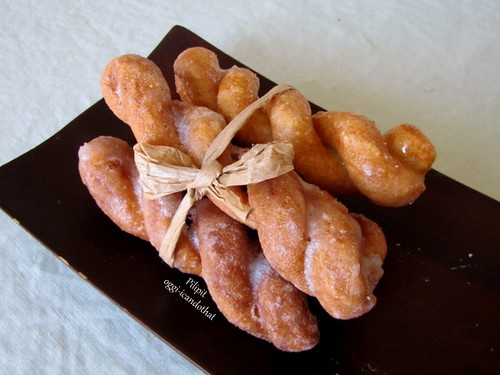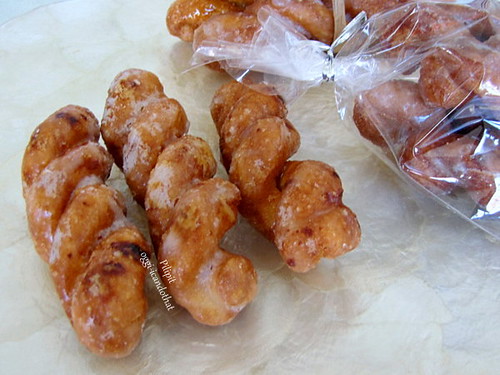According to José Andrés, his red wine sangria is one of the most popular drinks in his Jaleo restaurants and I can understand why. The boozy drink is refreshing and can be taken any time of the year, not just during summer. This not-your-typical sangria goes very well with Spanish food, of course.
I used tiny mandarin oranges because that's what I have on my kitchen counter. The original recipe has 1 piece of peeled and sliced [regular size navel] orange.
I used tiny mandarin oranges because that's what I have on my kitchen counter. The original recipe has 1 piece of peeled and sliced [regular size navel] orange.
Red Wine Sangria
adapted from Made in Spain by José Andrés
1 bottle fruity red wine
¼ cup brandy
¼ cup Cointreau
¼ cup vodka
a splash of ruby port
2 mandarin oranges, sliced
2 granny smith apples, diced
1 strip of lemon zest
1 cinnamon stick
¼ cup fresh orange juice
a splash of soda water
adapted from Made in Spain by José Andrés
1 bottle fruity red wine
¼ cup brandy
¼ cup Cointreau
¼ cup vodka
a splash of ruby port
2 mandarin oranges, sliced
2 granny smith apples, diced
1 strip of lemon zest
1 cinnamon stick
¼ cup fresh orange juice
a splash of soda water
- Combine the wine, brandy, Cointreau, vodka, port, orange slices, apples, and cinnamon stick in a bowl and refrigerate for 4 hours.
- Pour the mixture into a pitcher filled halfway with ice. Add the orange juice and soda water, give a quick stir and serve.
- Make sure each glass gets ice and fruit.


